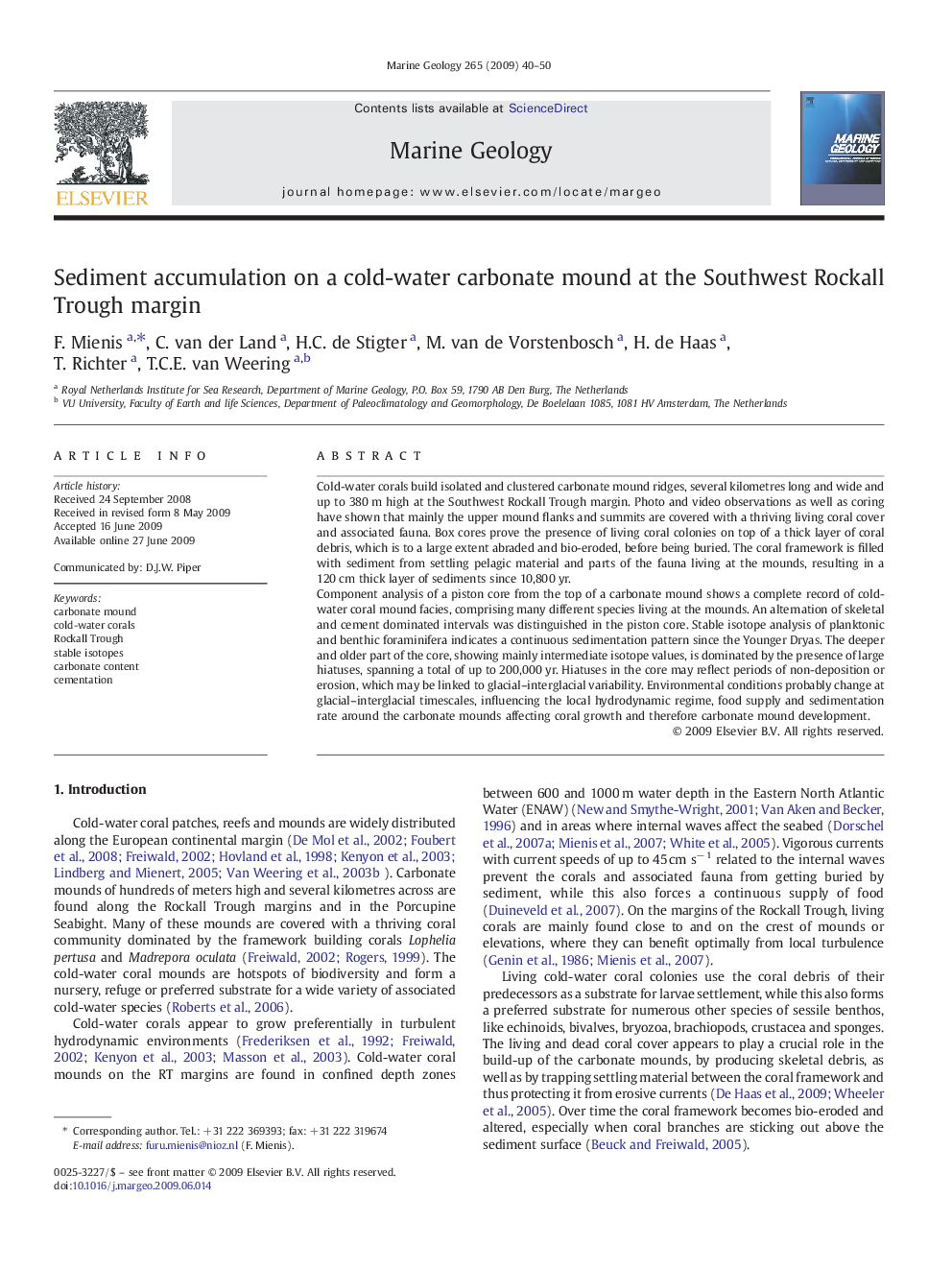| Article ID | Journal | Published Year | Pages | File Type |
|---|---|---|---|---|
| 4719094 | Marine Geology | 2009 | 11 Pages |
Cold-water corals build isolated and clustered carbonate mound ridges, several kilometres long and wide and up to 380 m high at the Southwest Rockall Trough margin. Photo and video observations as well as coring have shown that mainly the upper mound flanks and summits are covered with a thriving living coral cover and associated fauna. Box cores prove the presence of living coral colonies on top of a thick layer of coral debris, which is to a large extent abraded and bio-eroded, before being buried. The coral framework is filled with sediment from settling pelagic material and parts of the fauna living at the mounds, resulting in a 120 cm thick layer of sediments since 10,800 yr.Component analysis of a piston core from the top of a carbonate mound shows a complete record of cold-water coral mound facies, comprising many different species living at the mounds. An alternation of skeletal and cement dominated intervals was distinguished in the piston core. Stable isotope analysis of planktonic and benthic foraminifera indicates a continuous sedimentation pattern since the Younger Dryas. The deeper and older part of the core, showing mainly intermediate isotope values, is dominated by the presence of large hiatuses, spanning a total of up to 200,000 yr. Hiatuses in the core may reflect periods of non-deposition or erosion, which may be linked to glacial–interglacial variability. Environmental conditions probably change at glacial–interglacial timescales, influencing the local hydrodynamic regime, food supply and sedimentation rate around the carbonate mounds affecting coral growth and therefore carbonate mound development.
